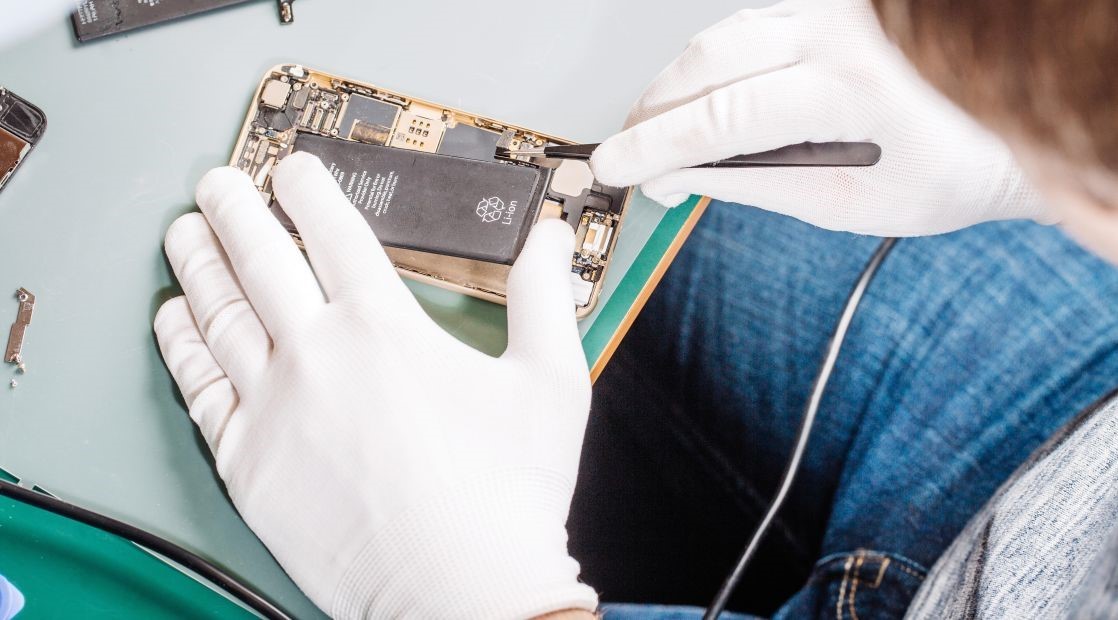
How to tell when your phone's battery life is over
 As you use, and then recharge your phone on a daily basis, its battery life diminishes. And while some companies manufacture high-end smartphones which include batteries that can last for 3 to 5 years, most of us are stuck with mid-range devices that start to behave poorly after being used for a year or so. It's not a surprise, because common smartphone batteries have been built to last for about 500 charging cycles. So, if you charge your phone daily, the battery should work fine for about 1.5 years, but then it will start to diminish its capacity gradually.
As you use, and then recharge your phone on a daily basis, its battery life diminishes. And while some companies manufacture high-end smartphones which include batteries that can last for 3 to 5 years, most of us are stuck with mid-range devices that start to behave poorly after being used for a year or so. It's not a surprise, because common smartphone batteries have been built to last for about 500 charging cycles. So, if you charge your phone daily, the battery should work fine for about 1.5 years, but then it will start to diminish its capacity gradually.
You may be asking yourself why this is happening. Well, I have already written an article which discusses how lithium-ion batteries work a while ago, but here's a quick recap. As the ions move back and forth because the battery is constantly being charged and discharged, those chemical reactions lead to waste that builds up, increasing the internal resistance of the battery, and thus reducing its efficiency.
Allow me to put on my physics teacher hat for a minute or two, okay? According to Ohm's law, the current that flows through a resistor is proportional with the voltage that's applied to the resistor. Here's the formula that describes this law:
I = V / R
where I is the intensity of the current that flows through the circuit, V is the battery voltage and R is the equivalent resistance of your phone. Truth be told, we can't use that formula for a phone battery, because it isn't an ideal power source. The proper formula to use is this case is the one that's utilized to compute the current which flows through a simple circuit:
I = E / (R + r)
where E is the open circuit voltage and r is the internal resistance of the battery. If we're talking about a standard phone battery, E is often set to 4.4V and r has a typical value of 0.1 ohms. The intensity of the current that's drawn by your phone from the battery doesn't have a fixed value; it is constantly changing, depending on the number and type of open applications, screen brightness, the number of lit pixels, their intensity, and so on. This means that the equivalent resistance of the phone is changing as well, but let's assume that it's fixed at 5 ohms for the sake of this example.
Here's what happens when the battery is new:
I = 4.4 / (5 + 0.1) = 0.86 Amps.
Great job! Your phone can draw up to 0.86 Amps from the battery. As those cells are charged and discharged over and over, the internal resistance starts to grow. So, let's assume that r has reached a value of 1 ohm after your phone has been used for three months.
I = 4.4 / (5 + 1) = 0.73 Amps.
At this point you may start to discover that the battery needs to be recharged more often. Maybe you used to go through an entire day without problems, but now you need to charge your phone again in the afternoon. Sadly, after a year of usage, the internal resistance may reach 10 ohms or so, limiting the current that can flow through the circuit to only:
I = 4.4 / (5 + 10) = 0.29 Amps.
By now, your phone will stop working fine. You may be able to turn it on, but it'll turn off quickly, because the battery won't have the capacity to store enough power.
iPhones have had a "Battery Health" (capacity) indicator for quite some time now; you can find it in the phone's "Settings" -> "Battery". Android users aren't that lucky; however, third-party apps such as AccuBattery can do a great job.
The good news is that most phone batteries can be replaced without too much effort. And if you've purchased a smartphone that's really hard to open, it may be a good idea to dump it, and then purchase a new one, which will give you access to new features and hopefully patch all the existing O.S. security holes.

 As you use, and then recharge your phone on a daily basis, its battery life diminishes. And while some companies manufacture high-end smartphones which include batteries that can last for 3 to 5 years, most of us are stuck with mid-range devices that start to behave poorly after being used for a year or so. It's not a surprise, because common smartphone batteries have been built to last for about 500 charging cycles. So, if you charge your phone daily, the battery should work fine for about 1.5 years, but then it will start to diminish its capacity gradually.
As you use, and then recharge your phone on a daily basis, its battery life diminishes. And while some companies manufacture high-end smartphones which include batteries that can last for 3 to 5 years, most of us are stuck with mid-range devices that start to behave poorly after being used for a year or so. It's not a surprise, because common smartphone batteries have been built to last for about 500 charging cycles. So, if you charge your phone daily, the battery should work fine for about 1.5 years, but then it will start to diminish its capacity gradually.